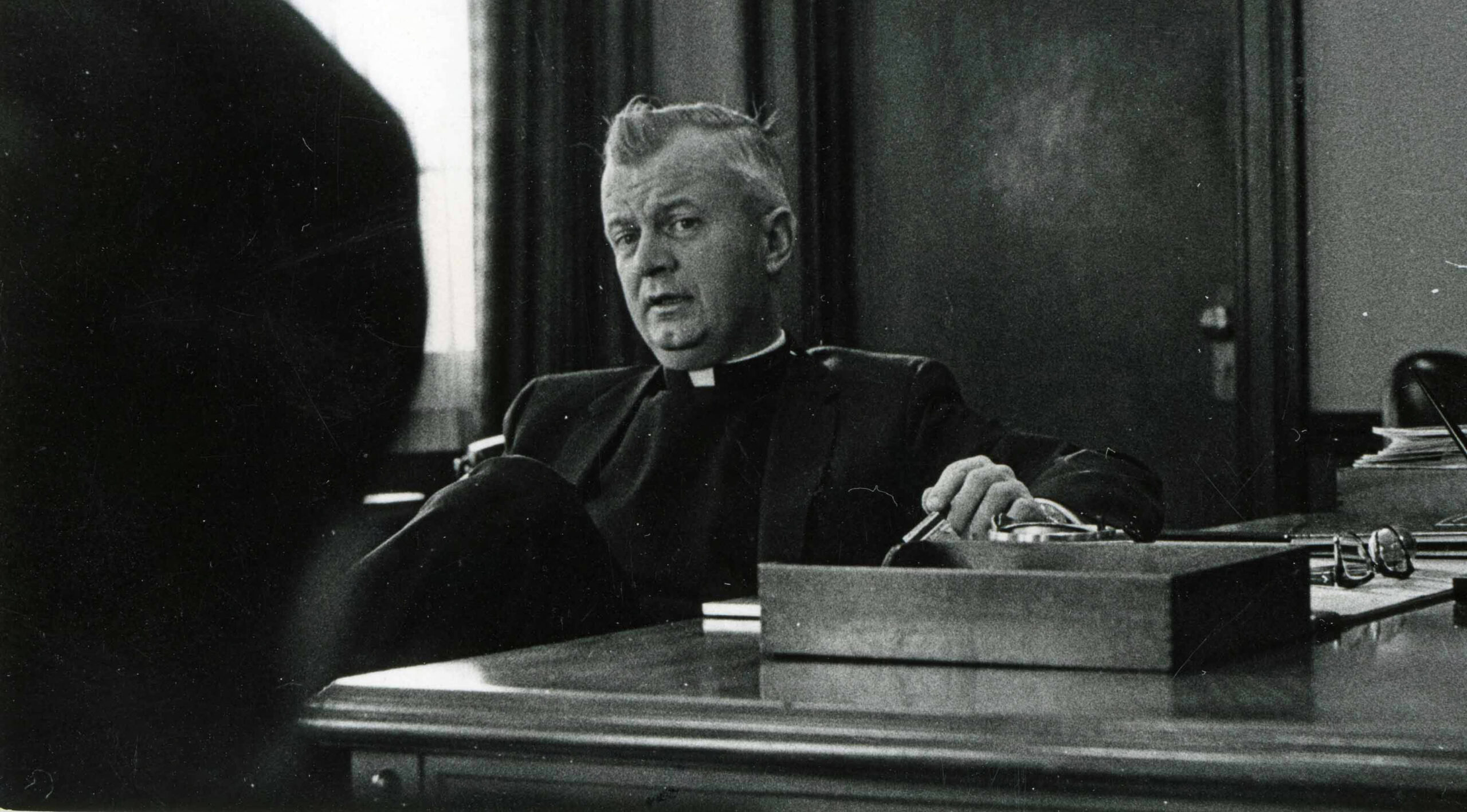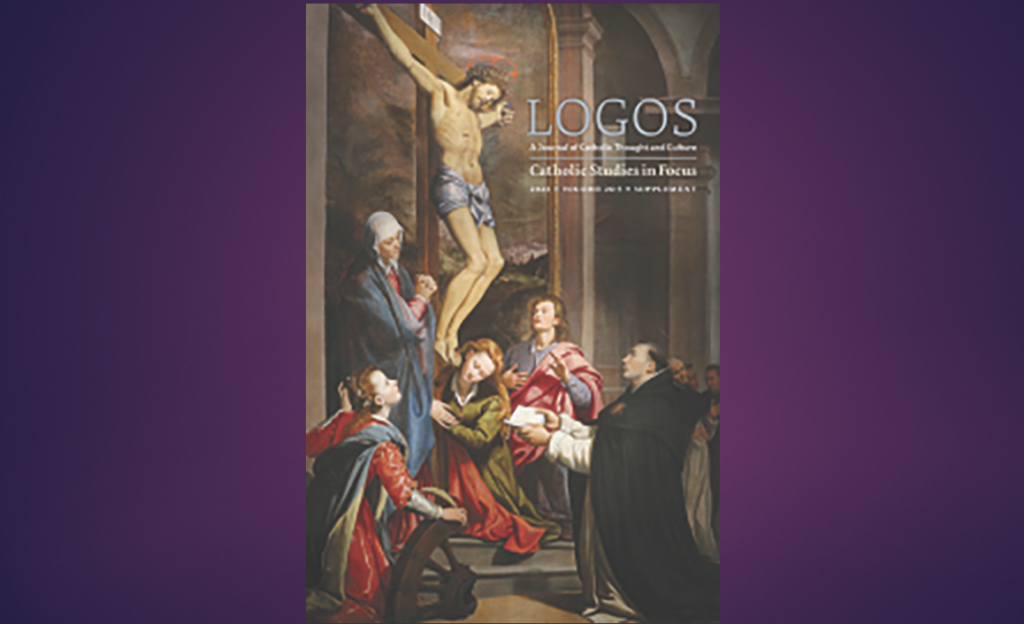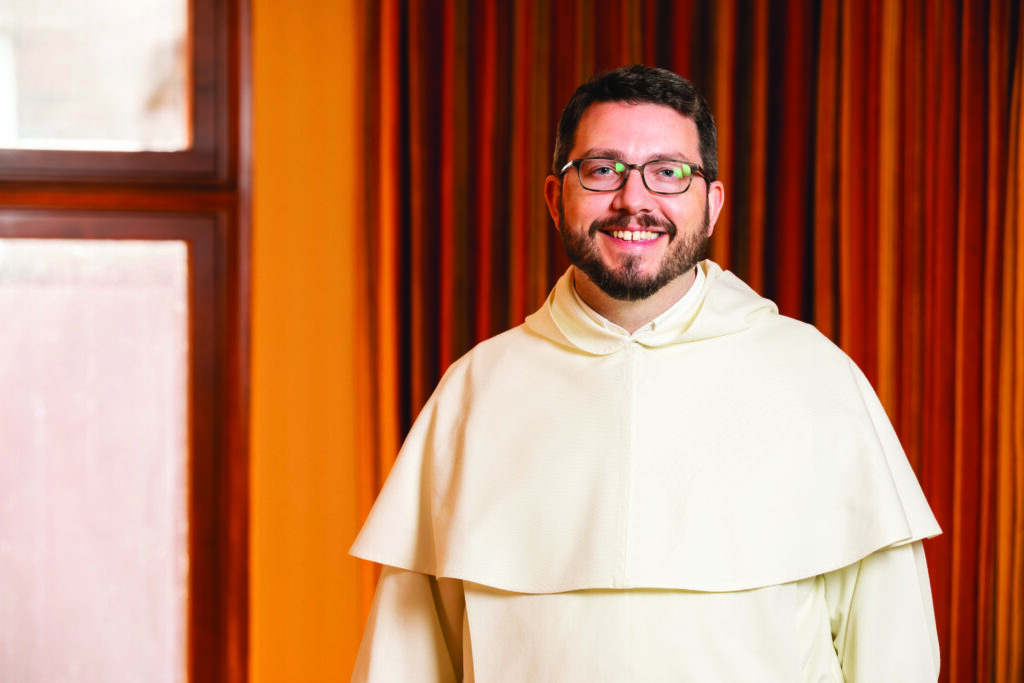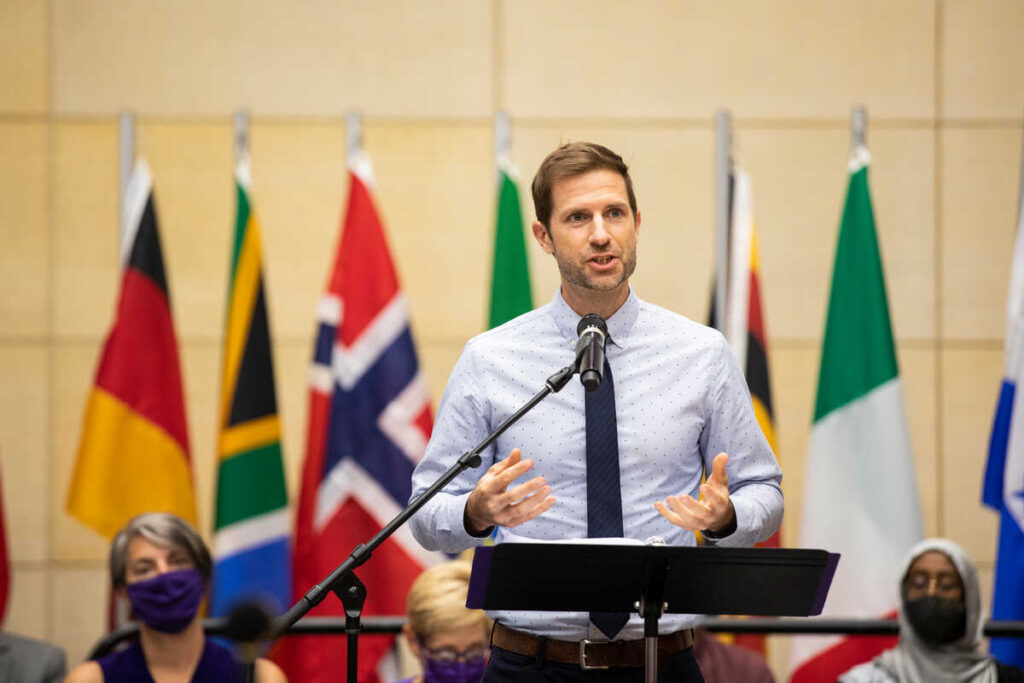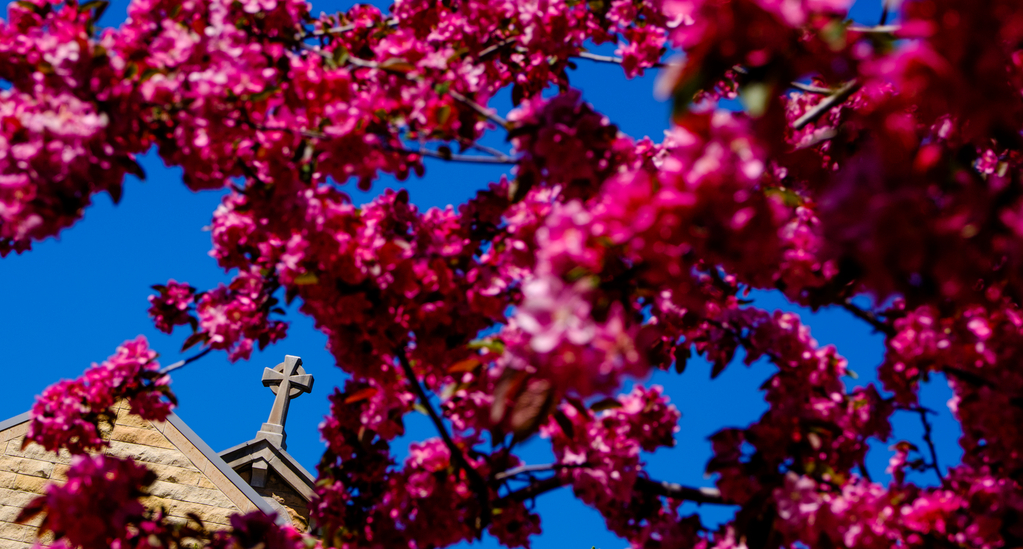I first met Monsignor Terrence Murphy – the 13th president of St. Thomas – not as a biographer or historian, but as a reader of his own words.
As part of an assistantship coupled to my graduate pursuits in Catholic Studies, I was asked to transcribe the handwritten and typewritten homilies and speeches Murphy gave throughout his career. The documents were compiled and shared by his family after years of waiting in an old trunk. The sense of preciousness inherent to the documents originally slipped my notice, falling between intensive studies and the mundanity of PDF transcription copies.
When I began, I didn’t know Murphy was the man whose statue gestures heavenward outside of McNeely Hall. But I knew his handwritten scrawl had an unfortunate tendency to jilt like a seismometer when he reached a crescendo. Through perseverance and much squinting, I swooned. What got me hooked on all things Murphy was not the murals, the statues or the newspaper articles about him. It was the content of his homilies.
Impressed and compelled, I rocketed through the project of transforming his handwriting into a digital text, and in a scholarly frenzy, I believed I had discovered an unknown hero of the local church.
Thanks be to God that before I could embarrass myself too much, I realized that I was not the first. The threads of Murphy’s life are woven into the campus.
Like most Tommies, I know the more quotable names in university lore: Archbishop John Ireland, Bishops Dowling and Binz, and Mr. Ignatius Aloysius O’Shaughnessy. The more landmarks I found gesturing toward the accomplishments of Murphy, the more I was saddened that in discussions of our university, none of my classmates were acquainted with who – I am convinced – has been one of its most instrumental players.
In his text he addresses the university by name. His gaze is steady and serious, and doting in a way that only a leader can muster. When Murphy first sat in the president’s chair in 1967, the College of St. Thomas was an all men’s institution, a single campus located in St. Paul with an annual budget of $3.5 million. A mere 25 years later, at his retirement in 1991, St. Thomas had increased its annual budget to $84.4 million, added 12 graduate programs, quadrupled its enrollment, opened three new campuses, became coeducational, and renamed to what it had certainly become: a university.
Truly, his list of accomplishments is so voluminous that biographies tend to crimp at each paragraph break. The awards, commemorations, projects and expansions of the university under Murphy’s leadership become tallies in which the character of the man can often be lost. This is precisely what put me in such a pickle. I found it impossible to explain to classmates whom I was researching – a professor, a priest, a president, an entrepreneur, a military chaplain, a spokesman on education, a local legend.
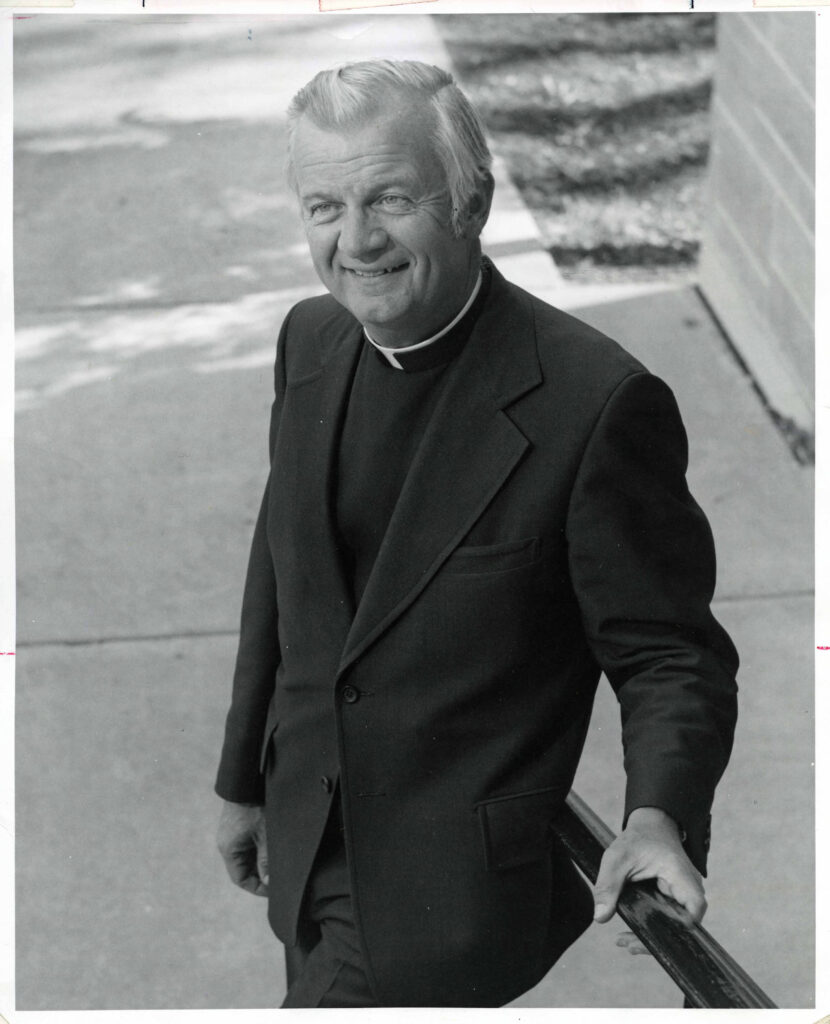
“I am increasingly aware of the extent to which the work of this college is the work of God expressed in concern for and service of others.”
Monsignor Terrence Murphy Inaugural Address, 1967
I am so pleased to say that the documents which acquainted me with Monsignor Murphy, the priest, before President Murphy, the legend, are now accessible in the Monsignor Terrence J. Murphy Digital Archive, which can be found in the University of St. Thomas Archive Digital Collections. Links are also included on the website of the Terrence J. Murphy Institute, a collaboration between the Center for Catholic Studies and the School of Law.
In this archive he stands patient, pastoral and convicted, never shying from the details of a homiletic fine point. He is attentive to nuance and distinction, uncompromising in the orthodoxy and tradition of the Catholic faith. His writing seems rooted and tough, but also humble and deeply caring. To read his works is to experience simultaneously the grounding that only a good father can give and convictions that can only come from a good leader.
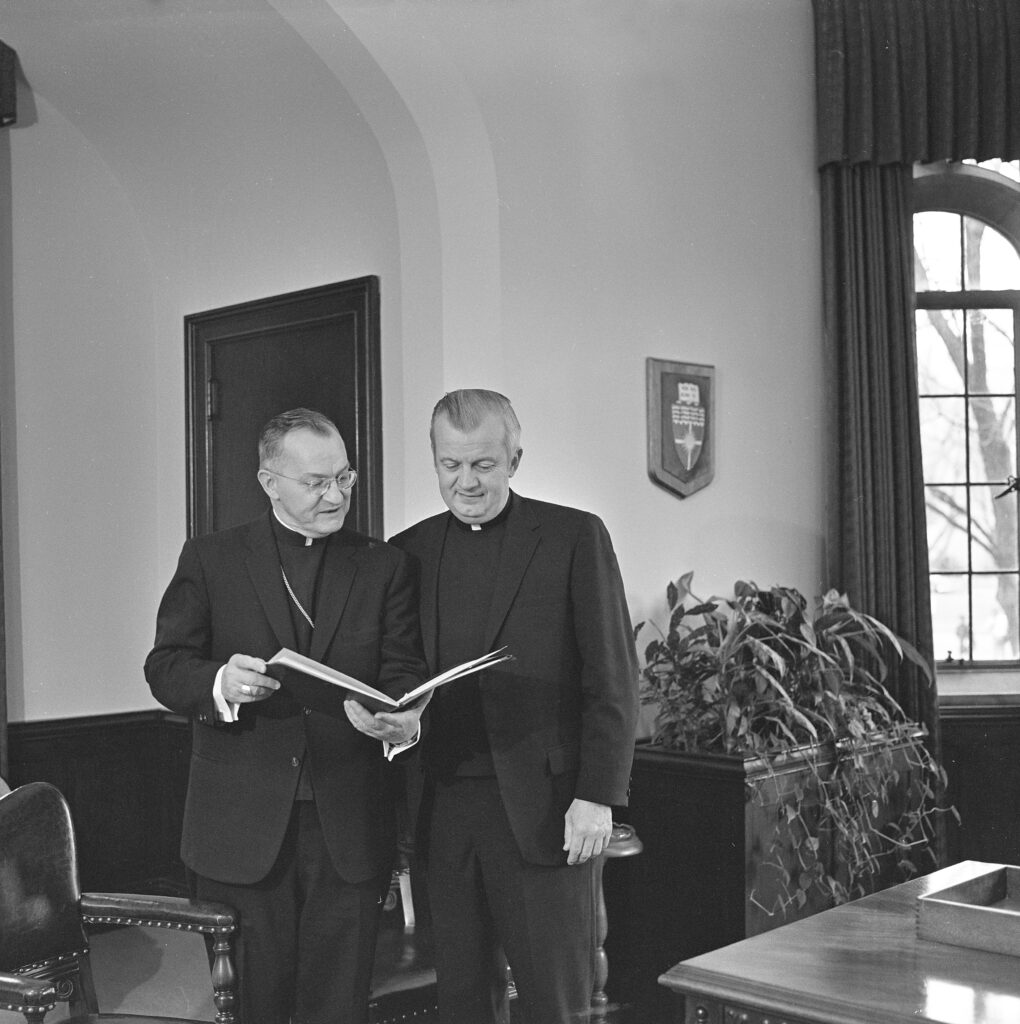
Murphy wrote that in years of increased secularization in the classroom, it is common to see a sentiment of shyness toward engaging religiosity. But in A Catholic University, he wrote, “For too long religion has been ignored and relegated solely to the private lives of people: their moral convictions were to be left at home and not influence their lives on the job, in community endeavors, or in the relationships with other people. Such a philosophy impoverishes people’s lives and undermines the health of society. For this reason, the conviction that religion should enter the marketplace and public forum became a guiding star that set the direction of the university.”1
Access to these homilies and transcriptions of Murphy is a witness to his understanding of the advocacy for the partnership of religion and university. His vision is a comprehension of the integrated human person in whom faith and reason work together. Contrary to modern belief, their coexistence does not in the least cripple the open-mindedness or expansive character of the university. Rather, the unity of the Catholic vision equips it for growth, a growth that is wholesome and resilient against the brittle fault lines of separate visions.
In his inaugural address, Murphy said, “I confess to you today a very personal conviction that has grown upon me with ever greater clarity almost from the moment that my appointment was announced. I am increasingly aware of the extent to which the work of this college is the work of God expressed in concern for and service of others. If it is his work, then surely it must succeed.”
As St. Thomas continues to grow, I hope that these archives may help inform current leaders about the great vision of our past president and his route toward future success.
1 Murphy, Terrence. A Catholic University: Vision and Opportunities, “The Religious Mission of a Catholic University.” p. 9.
This story is featured in the fall-winter 2022 issue of Lumen.
